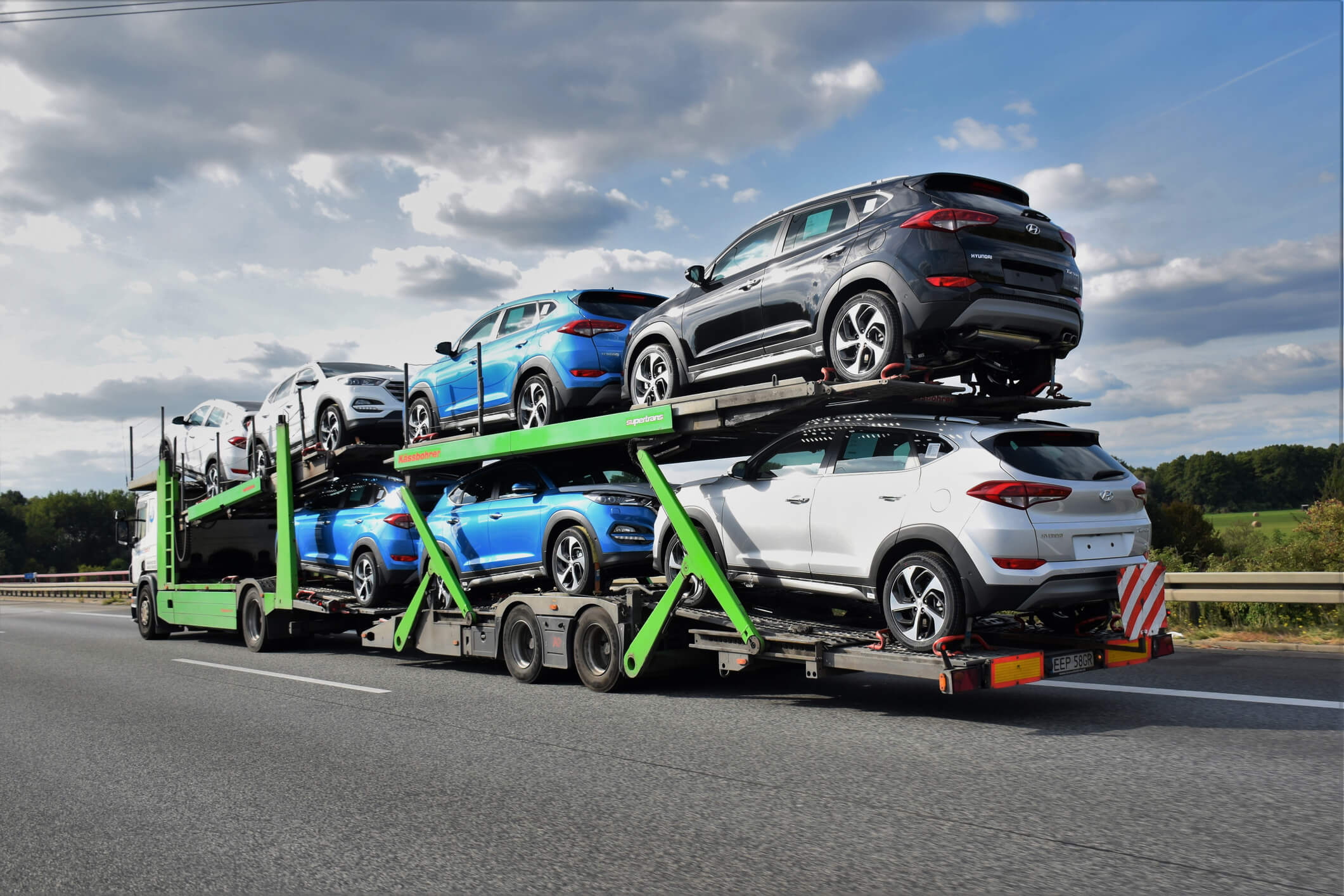
Buying a car online has never been more accessible — or more popular. Around 80% of shoppers say that they’re open to buying a car online instead of in-person or at the dealership.
This comes as no surprise: With today’s technology, you can order a new car with just the click of a few buttons. One could even argue that buying a car online is no different from other online shopping.
If you’re tired of waiting around at the dealerships or searching for the right car locally, then it might be time to try shopping online. But before you begin searching for your next ride, be sure to do your research and know what to expect from the process.
Is It Better to Buy a Car Online or at the Dealership?
Although we’re well into the digital age, people are still wary about buying a car online, which might beg the question: Is it better to buy a vehicle online or at the dealership? There are pros and cons to both, but it all comes down to your preference in the end.
At the dealership, you get the personal touch of a salesperson with the option to negotiate in real-time. You’re also left with the chance to test drive as many cars as you’d like before you make a final decision.
However, it turns out that going to the dealership or used car lot is not as exciting as it once was. Whether it’s the waiting and the endless paperwork, the grand majority of car shoppers say they dislike going to the dealership and relying on local salespeople because they feel like they’re being taken advantage of.
On the other hand, online car shopping allows you to work at your own pace so that you can take the time to find the car you want. Thanks to technology like chatbots and email quotes, the turnaround time for a response often occurs within a few minutes. Additionally, offers come with plenty of discounts or promotional deals to keep inventory moving.
However, the downside is significant: you can’t test drive the car unless it’s local or until after it’s arrived.
The bottom line is that you should consider the overall cost, turnaround time, and financing options when choosing a car. Whatever you’re more drawn to, the numbers don’t lie: A quarter of car shoppers say they’d instead buy a car online.
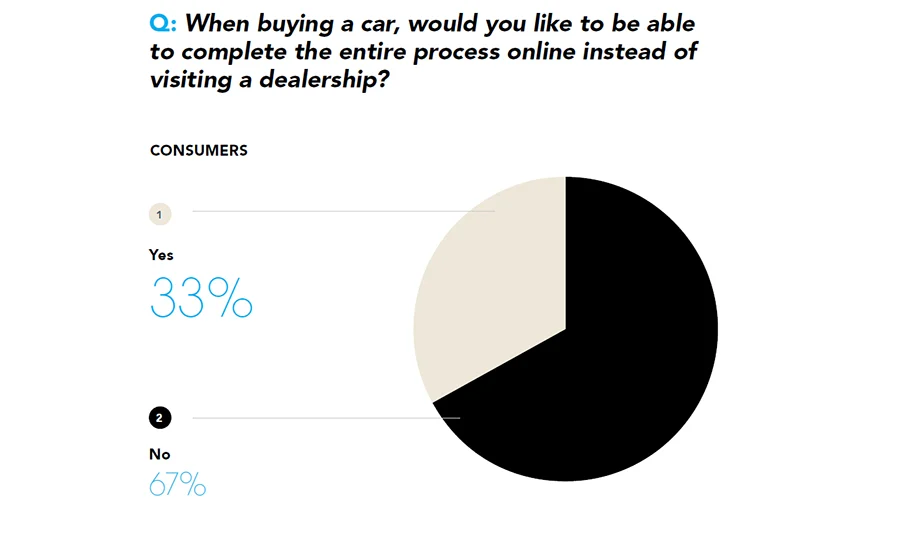
If you’ve decided to be a part of this 25%, here are a few tips to help your car-buying decision.
What Do I Need to Know When Buying a Car Online?
The excitement that comes with buying a new car is a contagious feeling.
You get to trade in your old clunker for something new and shiny. Maybe you’ll ditch the cassette player in your decades-old car for Bluetooth. Or maybe your family has doubled in size, and it’s time that your car does, too.
Regardless of the reason, buying online is one of the best choices you can make because you’re allowed to shop and research at your own pace.
As you get started on your car-buying trip, keep in mind these essential tips:
Tip #1: Set a Budget
Americans are facing $1.37 trillion in auto loan debt — which is an unfortunate new high.
That’s why setting a budget before you begin your search is the most crucial thing you can do. If you come up with a reasonable number and stick to it, then you’ll have a monthly payment cost and total loan that is a breeze to pay back.
Check out car loan calculators that can help you figure out what you can actually afford. Try to go by the 20/4/10 ratio rule, which says:
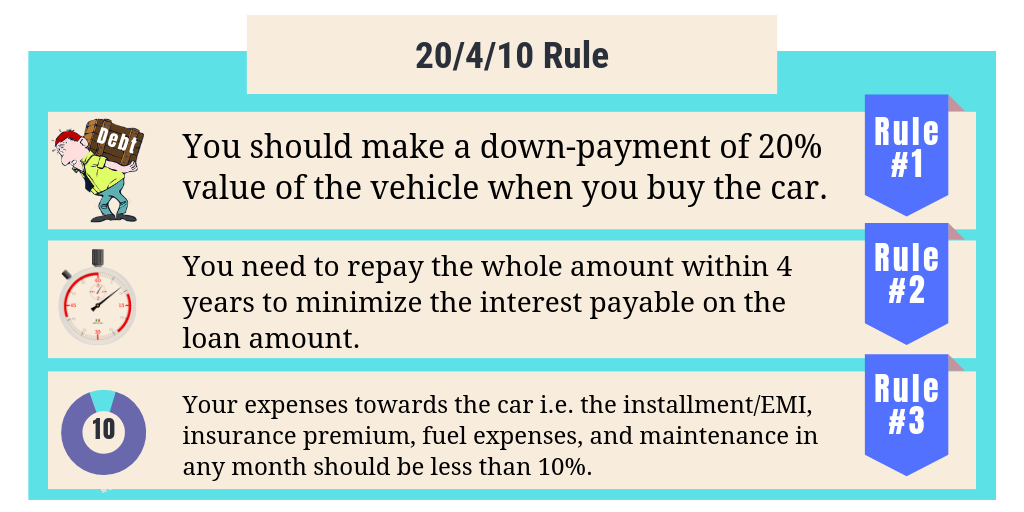
- You should put down at least 20% of the total cost
- You should finance the car for no more than four years
- You should keep your total monthly car payment at or below 10% of your monthly income
Why 20%? A new car loses 9% of its value as soon as you drive it off the lot. If you put less than 20% down, then you’ll be in over your head and end up owing more than the car’s worth within just a couple of years.
Why no more than four years? The longer your loan term, the more interest you’ll pay. Although the newest loan length is around six years (or 70 months), many Americans are putting themselves into further debt because of skyrocketing interest rates. Four years (or 48 months) is a good standard when buying a new or used car.
Why keep your monthly payment below 10%? Keeping a budget is all about sticking to it. This means that you’re not overspending money that you don’t have. Staying at or below 10% of your monthly income means that you still leave enough wiggle room to put money into your savings or spend on other necessities.
Tip #2: Think About the Features You Need
Yes, it’s tempting to have a “go big or go home” attitude when shopping for a new car. New features like automatic rearview mirrors and auto-braking are attractive, but you should take some time to think about what you truly need from your car. Remember: Any feature you add to your car will also add to the price tag.
Here are some popular features you might consider when buying a car:
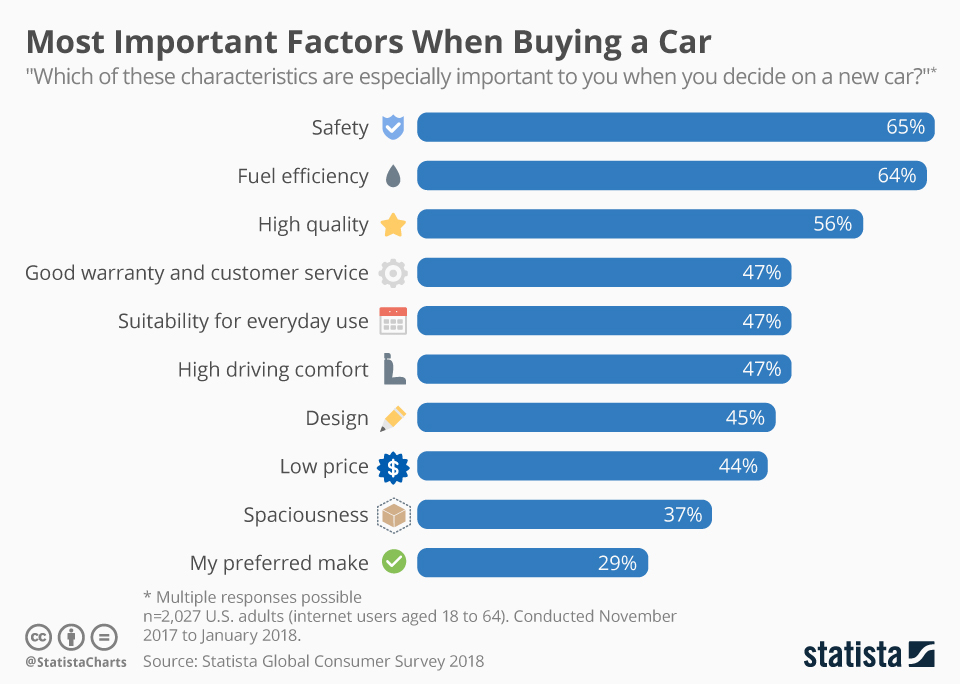
- Safety
- Fuel efficiency
- High-quality
- Good warranty and customer service
- Suitable for everyday use
- High driving comfort
- Design
- Low price
- Spaciousness
- Preferred make
It’s best to be realistic about your needs. For example, if you’re a parent with young children, then you know you probably need a four-door SUV. If you’re single, then a sedan could be the perfect fit. Think about what’s important to you when it comes to your car.
Tip #3: Check Your Financing Options
When buying a car, you have two financing options:
- Direct lending: Direct lending is when you borrow money or get a loan from a bank, finance company, or credit union. This loan agreement says that you’ve agreed to pay the amount financed plus a finance charge (interest) over some time. When you’re ready to buy a car, you’ll use this loan to pay for it.
- Dealership financing: Dealership financing is when you’re applying for financing through the dealership. You enter into a contract with a bank, finance company, or credit union where you’ve agreed to pay the amount financed plus an interest charge.
If you want to get the best deal possible, take time to compare financing offers from several creditors and the dealerships you’re considering. Find one that has a monthly and APR rate that suits your budget.
Tip #4: Research the Blue Book Value
If you’re unfamiliar with Kelley Blue Book, it’s the most popular and trusted website for automobile pricing. This makes it perfect for new and used car buyers.
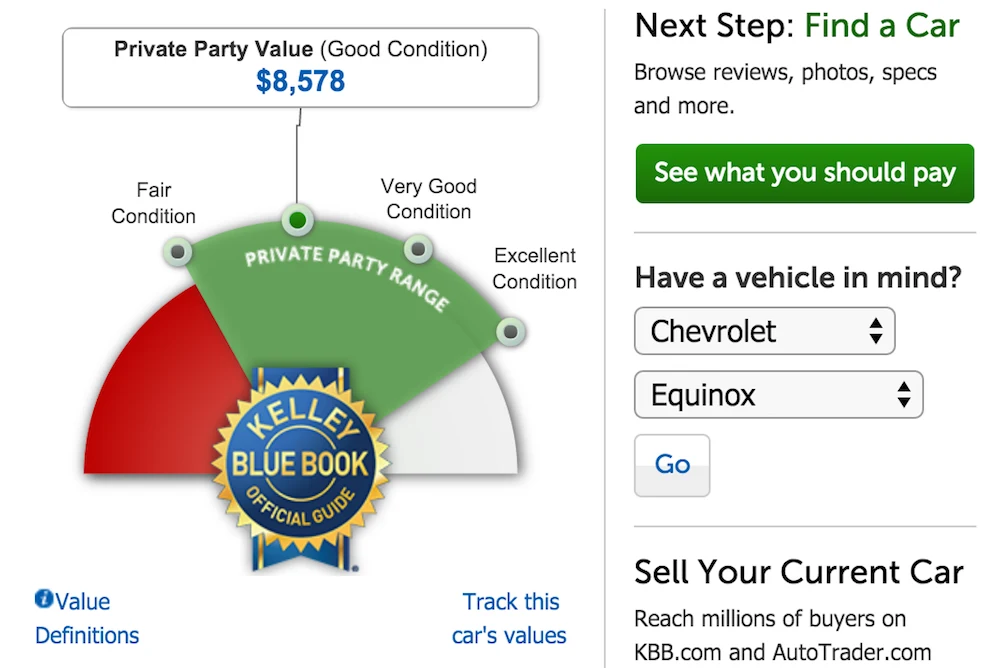
Kelley Blue Book—also known as KBB or just the Blue Book—assesses the following factors for an accurate value estimate:
- Private party value
- Trade-in value
- Suggested retail value
- Certified pre-owned (CPO) value
These factors are based on your location, the current market trends, and the season. KBB’s proprietary algorithm also analyzes historical trends, current economic conditions, and industry developments. Prices for a car can change drastically depending on where you live and what time of year it is.
Tip #5: Request the Car’s History
When buying used or through a third-party seller, like the driver or owner, it’s crucial to request the car’s history and service records if they’re not already available.
You can check a car’s history by obtaining the VIN, a unique 17-digit serial number given to each car. When you look up a VIN, you get instant access to the car’s history report, including its registration, recalls, and a lot more helpful information.
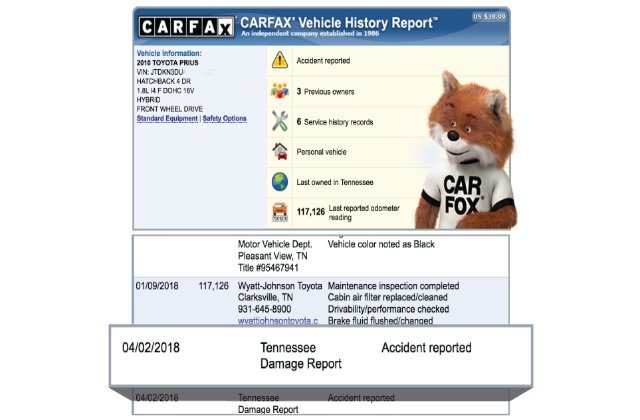
Keep an eye out for:
- The number of previous owners — If it’s two or more, this may be a red flag that something is wrong with the car.
- Whether the car’s been in any accidents — Cars that have been in accidents can face significant internal damage, even if it’s not visible.
- The service records and maintenance status — Ultimately, you should know if the car was cared for and if the previous owner was diligent with its maintenance and upkeep. Cars need to receive routine care like oil changes and tire rotations to continue running correctly.
- Recalls or warranties — Although most certified car dealers will fix any past recalls, it’s good to know if there are any open ones before purchasing. Plus, if there’s an active warranty, you might still be covered if any repairs come up after purchase.
You can check the car’s history and records with the VIN through CarFax, which provides everything for $39.99, or check with free alternatives, such as:
- The National Insurance Crime Bureau for any reported damages, thefts, or loss records
- VehicleHistory.com for inspection and performance records
- The National Highway Traffic Safety Administration for recalls
Dealerships and certified used car sellers should provide you with the car’s history report and service records for free. If they don’t, use one of these paid or free resources to conduct your research thoroughly.
In addition to obtaining the car’s information, request proof of a recent service visit from the seller. A mechanic’s report should tell you if any current or upcoming issues have not yet been addressed.
Tip #6: Double-Check the Return Policy
As a car buyer, the last thing you want is to be stuck with a vehicle that doesn’t suit your expectations. Maybe the seller didn’t share all the details, or perhaps you just don’t like the way it drives. Whatever the cause for concern, whoever you buy the car from should have an open return policy, which will come in handy when purchasing online.
Unfortunately, there are no state or federal laws that protect the buyer in situations like this. As soon as the contract is signed, the car is legally yours, and the seller isn’t obligated to take it back. So, if you have buyer’s remorse or there’s an issue with the car, you might be stuck with it depending on the seller’s rules.
Pro-Tip: California is the only state that requires that all dealers offer used car buyers a two-day cancelation option. However, this doesn’t apply to new vehicles.
That’s why it’s best to stick to a dealer who puts customer satisfaction at the top of their priorities. Car sellers who genuinely value their customers’ experience and thoughts will always accept returns within reason.
The Main Exception: Lemon Laws
When a car is nearly bust, many people will call it a “lemon.” This is a term that refers to a vehicle that has several manufacturing defects affecting its safety, value, or utility. Any car with major mechanical issues after several repair attempts and is too flawed to use correctly may be considered a lemon.
Each state protects used car buyers with “lemon laws.” Lemon laws are not the same as buyer’s remorse or the right to rescind laws, as stated above. Lemon laws vary between states, so public governing bodies can decide on how to enforce these laws.
Generally speaking, a lemon law only applies to a vehicle that still has mechanical faults that make it unsafe to operate after a certain number of repair attempts.
Check out your state’s lemon laws here.
Conclusion
Whether you’re looking at new or used vehicles, going to the dealership can feel like a chore. In between the hours of waiting, filing paperwork, and the pushy salesmen, customers today don’t want to rely on dealerships when they need a new car.
That’s why online car shopping is getting so popular. However, buying a car online is not the same as a pair of jeans, so you need to be diligent in your buying and inspecting process.
When it’s time to find the car you want online, keep in mind these essential tips:
- Set a budget
- Think about the features you want
- Check your financing options
- Research the Blue Book value
- Request the car’s history
- Ensure there’s a return policy
However, the beauty of buying online is that you can find the perfect car from just about anywhere — which means that you don’t have to settle on local inventory. If you’ve finally found your dream car, but it’s in another state or even the other side of the country, then you need a reliable vehicle transport service.
Learn more about how Guardian Auto Transport can help get your dream car delivered right to your doorstep with a free instant quote.
